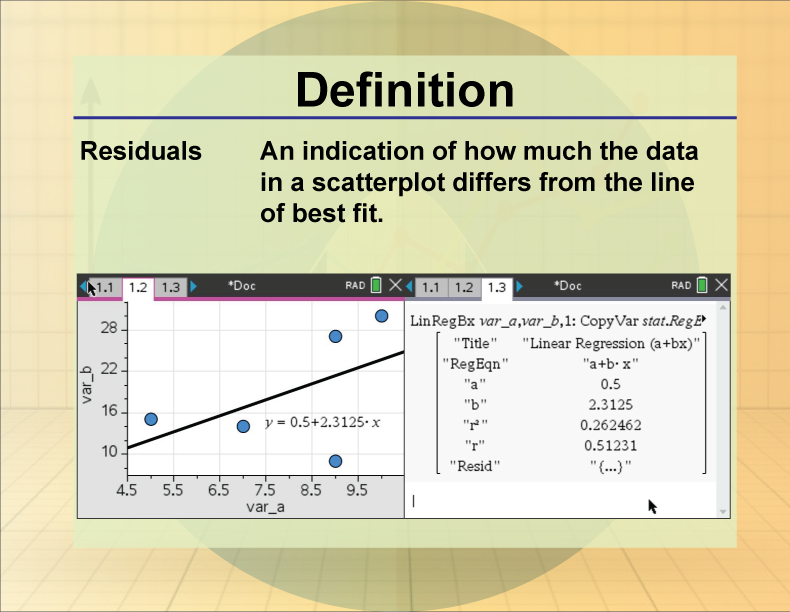
Display Title
Definition--Statistics and Probability Concepts--Residuals
Display Title
Residuals

Topic
Statistics and Probability
Definition
Residuals are the differences between observed and predicted values in a dataset.
Description
In statistics, residuals are crucial for assessing the accuracy of predictions generated by statistical models. They represent the errors in prediction, providing insight into the model's performance and areas for potential improvement.
In real-world contexts, residuals are analyzed in regression models to evaluate how well the model fits the data. Understanding residuals helps students recognize the importance of model validation and the potential for enhancing predictive accuracy. This understanding is foundational for further study in statistical methodologies and analytics.
By examining residuals, students can better understand the limitations of their models and explore ways to improve them.
For a complete collection of terms related to Probability and Statistics click on this link: Probability and Statistics Collection.
| Common Core Standards | CCSS.MATH.CONTENT.6.SP.B.4, CCSS.MATH.CONTENT.6.SP.A.2, CCSS.MATH.CONTENT.HSS.ID.A.1, CCSS.MATH.CONTENT.HSS.ID.A.2, CCSS.MATH.CONTENT.HSS.ID.A.3, CCSS.MATH.CONTENT.HSS.ID.A.4 |
|---|---|
| Grade Range | 8 - 12 |
| Curriculum Nodes |
Algebra • Probability and Data Analysis • Data Analysis |
| Copyright Year | 2020 |
| Keywords | statistics, probability |